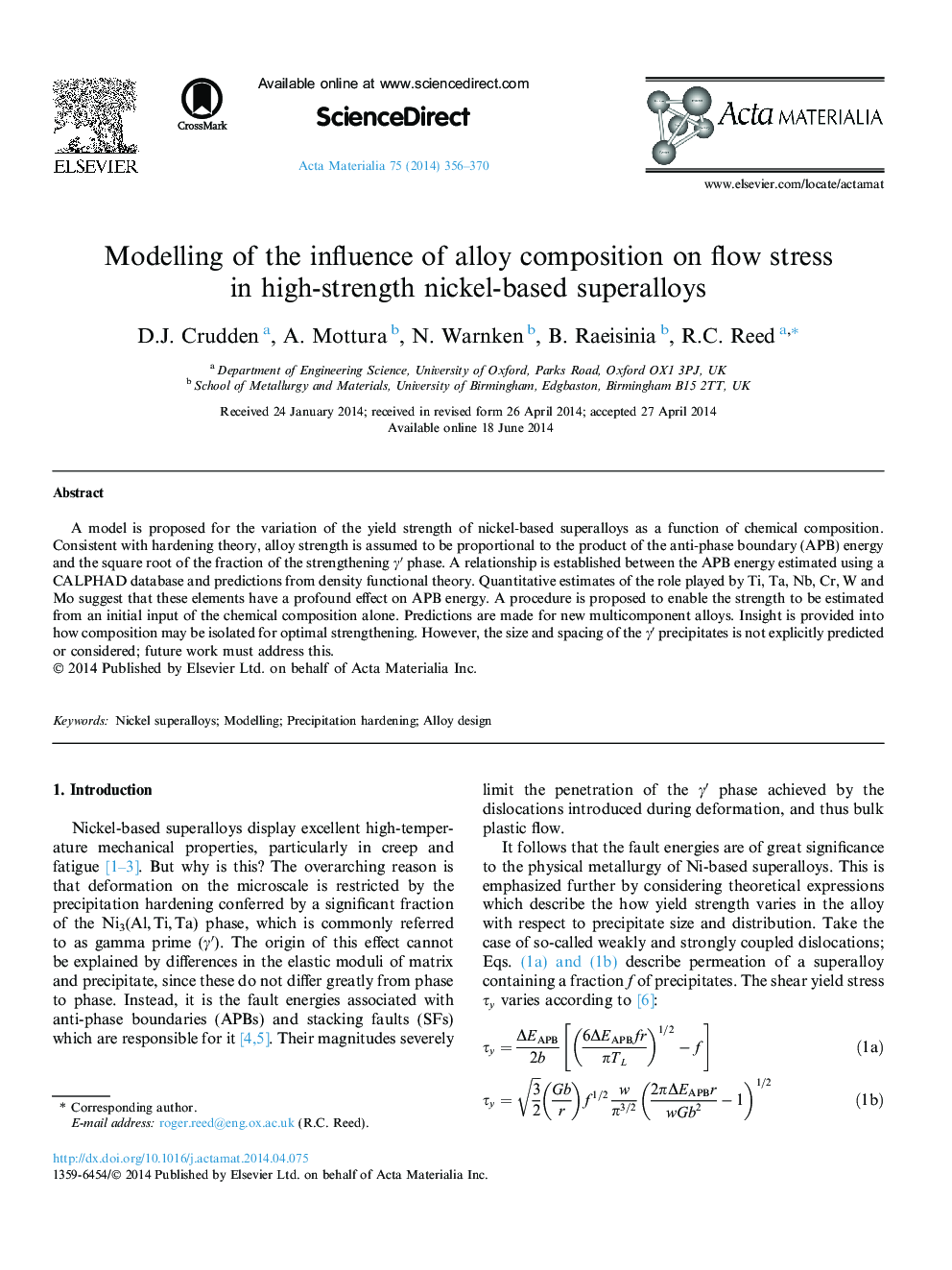| Article ID | Journal | Published Year | Pages | File Type |
|---|---|---|---|---|
| 1445492 | Acta Materialia | 2014 | 15 Pages |
A model is proposed for the variation of the yield strength of nickel-based superalloys as a function of chemical composition. Consistent with hardening theory, alloy strength is assumed to be proportional to the product of the anti-phase boundary (APB) energy and the square root of the fraction of the strengthening γ′γ′ phase. A relationship is established between the APB energy estimated using a CALPHAD database and predictions from density functional theory. Quantitative estimates of the role played by Ti, Ta, Nb, Cr, W and Mo suggest that these elements have a profound effect on APB energy. A procedure is proposed to enable the strength to be estimated from an initial input of the chemical composition alone. Predictions are made for new multicomponent alloys. Insight is provided into how composition may be isolated for optimal strengthening. However, the size and spacing of the γ′γ′ precipitates is not explicitly predicted or considered; future work must address this.
